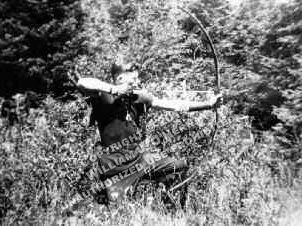
The Hermit and Us – Our Adirondack Adventures with Noah John Rondeau
The Indian Hermit
An excerpt from “The Hermit and Us”, Starting on page 18
Tony liked hanging around the local barbershop on Greenwood Street. The older men were always talking about trapping, hunting, and fishing. Tony was particularly taken with tales of the so-called “Indian,” a former Lake Placid barber-turned-hermit. The following witticism was a favorite story that was often told. He said he never knew if it was really a true tale:
The so-called Indian hermit was observed coming toward his old barber shop one day. The owner of the shop said, “Watch this,” to the patrons and dropped a single penny in the floor near the doorway. The “Indian” bent over in the entrance and picked up the copperhead. Of course, he dropped it quickly in his pocket as the gang in the shop stifled their laughter. The barber made an excuse to speak. “Oh that old Indian head. It’s been there all day. What’s the use of bending to pick up an old penny?” The man replied, “Oh no, it just so happens that ninety-nine more of them make a dollar.” Now who is the fool?
The man replied, “Oh no, it just so happens that ninety-nine more of them make a dollar.” Now who is the fool?
For Tony, whether or not one had made a contribution to the world would become evident come Judgment Day. He believed we should help one another and try not to intentionally hurt anybody. Tony wasn’t amused by the prank played on the “Indian.” Rather, he admired the man’s logic.That summer of 1934, Richard and Tony hatched a plan to put together a major trek into the deep Adirondack forest. Tony declared they should seek out the Indian-hermit who years earlier had gone off to live alone in the wilds around Cold River. They imagined themselves walking through the forest with this woodsman, bows and arrows in hand. The very idea that this reclusive fellow might still be alive and that they just might be able to muster the competence to locate him appealed to their adventurous, youthful natures.

Richard Smith demonstrating to Noah his skill with a bow. 1934.
Photograph by Tony Okie.
Courtesy of Richard J. Smith
They agreed that first Tony should learn to swim in case a river crossing was necessary. Several days later, they set out in the early light of morning to find the bow-hunting recluse. They brought along the bows and arrows they had put together from blueprints and directions found in Saxon Pope’s book, Hunting with the Bow and Arrow. “With our bows, my father’s hand-me-down .30-.30 Marlin, candy bars, dried fruit and nuts, oatmeal, sandwiches, clothing, blankets,” Richard recalled, they began their journey toward Four Corners—a short distance beyond Lake Placid’s railroad station and their homes. From that junction they hiked alone down a dirt road until they reached the Northville Placid Trail leading to Wanika Falls and the great forest beyond. The Sawtooth Mountains loomed in the distance. Duck Hole and the Cold River were even farther away.
No one they talked to seemed to have a clear idea where along the river the hermit lived, but the lack of solid information didn’t deter them. Tony had secured a rough hand-drawn map. His barber knew of the Indian-behaving
hermit and was somewhat familiar with the old Cold River logging path. His suggestion was that the hermit was most likely living somewhere off that tote road in the vicinity of the old dam and lumber camp at the impoundment.
The hike to the river’s edge took most of the day as they lollygagged along, shot arrows and stopped to eat their chocolate and raisins. Miles later, the pair arrived at a virgin stand of hardwoods where an aged log lean-to stood on the north bank of Cold River. At the inception of their journey, they had noble ideas of subsisting from wild foods taken off the land, so Richard found it comical that they devoured with no hesitancy a can of sardines and some dried-out “mice-nibbled doughnuts left on a shelf in the shelter.” While scouting around the open-faced structure, they saw the remainder of a huge head of a trout on a crude plank table.